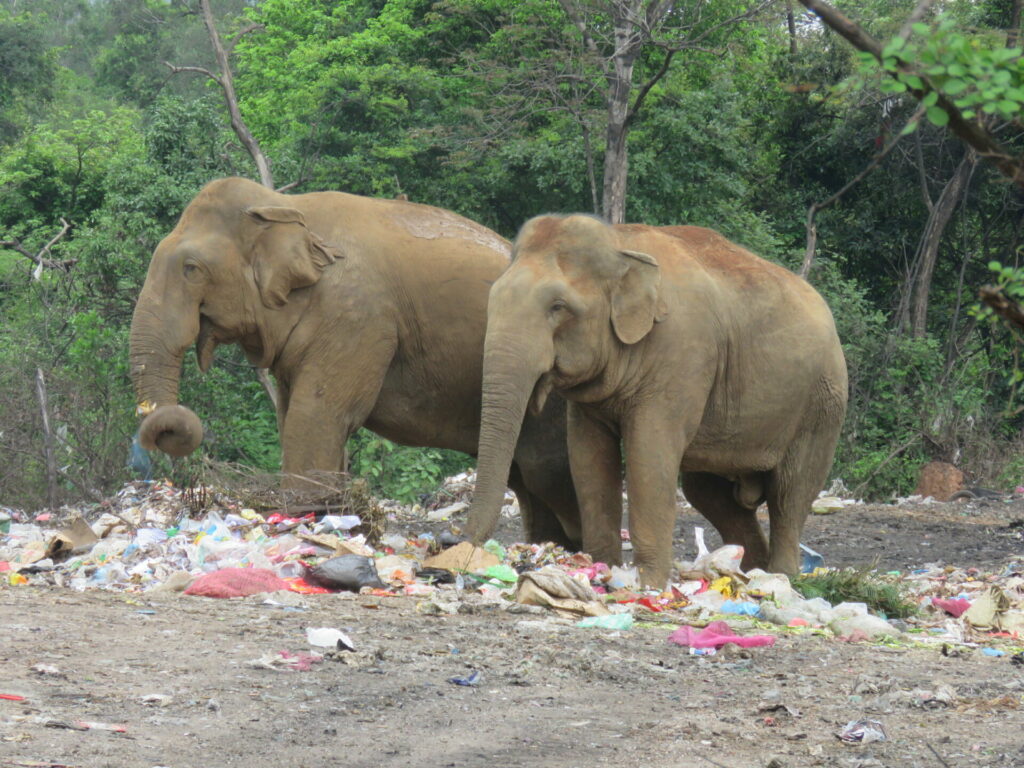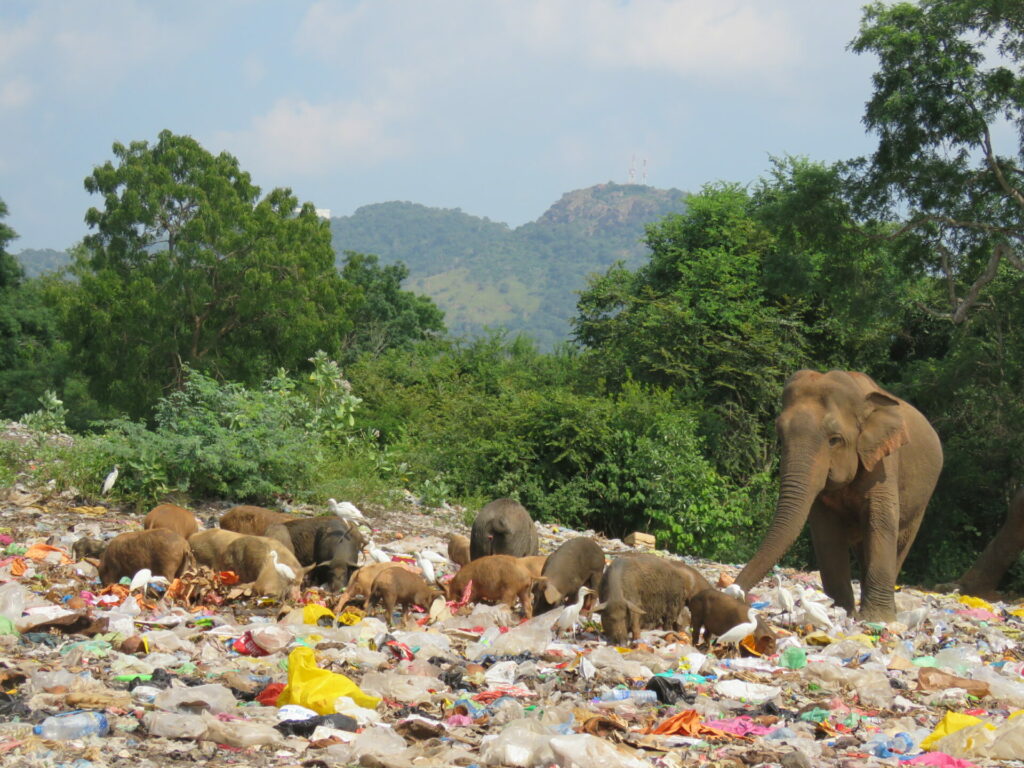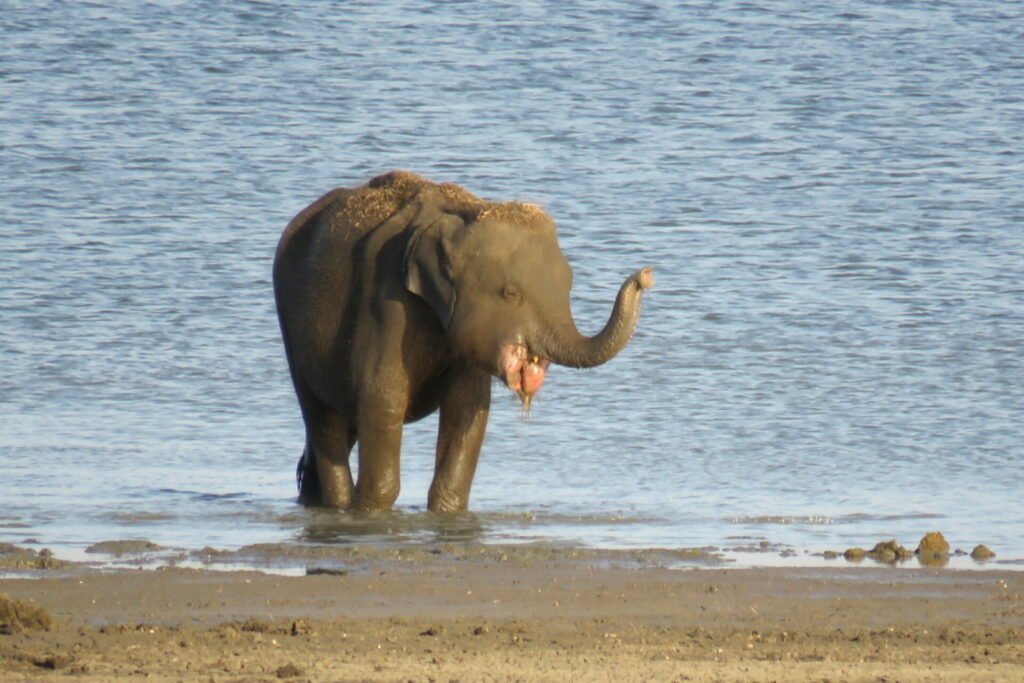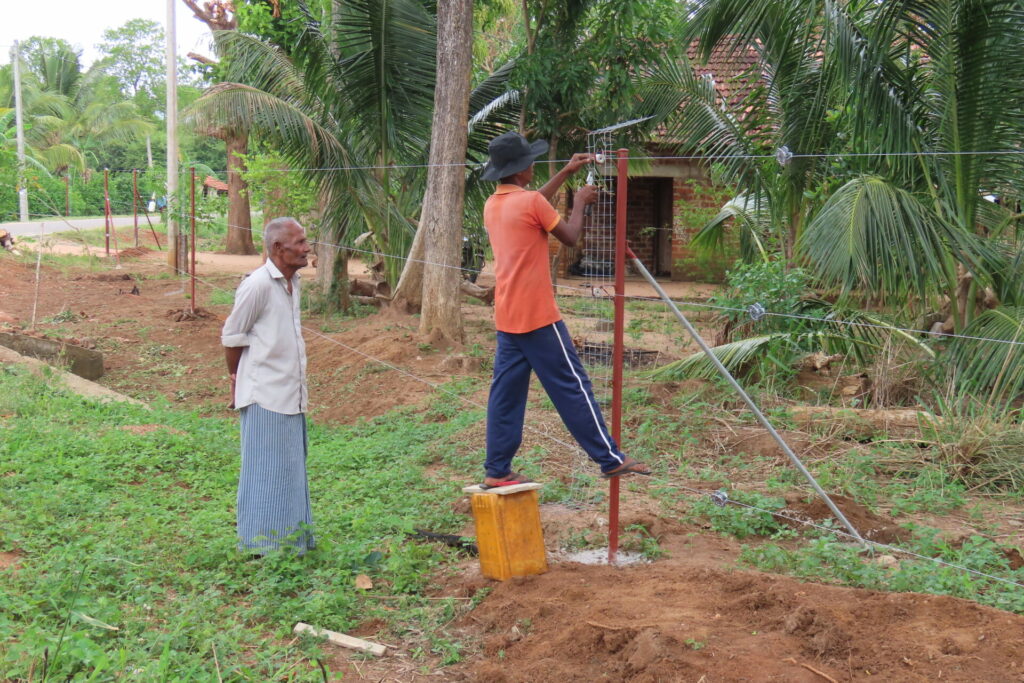The sight of elephants scavenging for food among plastic-strewn trash alongside stray dogs is a deeply unsettling one. We’re used to seeing these majestic creatures browsing on trees in the wilderness, not scraps of rotting human waste in open landfills. Troublingly, trash-foraging jumbos are becoming more common in Sri Lanka where earth’s largest land mammals are not only revered, but protected by law.
A staggering 10 per cent – that’s 5,000 – of the world’s dwindling Asian elephant population share this diminutive 25,000 square mile country with 22 million people. Despite Sri Lanka having the highest elephant density in Asia, they’re listed as an endangered species on the IUCN Red List.
Unlike their African cousins (which are faring better) it’s not poaching, rather habitat loss, and most recently human trash, threatening Sri Lanka’s subspecies of Asian elephant. Mistaking plastic for food, these empathetic giants are unwittingly poisoning themselves.
Killer Plastic
Last January, two herd members were discovered dead near Pallakkadu, a village located 130 miles east of Sri Lanka’s capital of Colombo. Autopsies revealed the unpalatable truth: their insides were clogged with nondegradable, human-produced plastic. Tragic images of whale carcasses riddled with plastic debris seem all too familiar, but land mammals succumbing to the same fate is a sickening new low for humanity and hard to stomach.

‘Plastic can be dangerous to the life of the elephant,’ Jayantha Jayewardene, a leading authority on Sri Lanka’s Asian elephants, tells The Ethicalist. It affects pachyderms in numerous ways: by releasing toxic chemicals into their systems, blocking their intestines and causing malnutrition. Imports of plastic cutlery, food wrappers and toys were banned two years ago after a spate of elephant deaths on the island, but plastic production continues in Sri Lanka.
‘Waste is dumped in vacant lands close to forests and protected areas – elephants come out from their jungle habitat and find this mixed buffet of food and other disposals at their doorstep’
Jayantha Jayewardene, Managing Trustee at Biodiversity and Elephant Conservation Trust
It’s worth noting that these megaherbivores spend between 16 to 18 hours per day eating. And they eat a lot: 140 kgs – that’s equivalent to the food intake of 70 grown adults. The Associated Press reported that 20 elephants have died from consuming indigestible waste at EU-bankrolled Pallakkadu’s garbage site – also used by nine neighbouring villages – in the past eight years. As well as being a breeding ground for bacteria and disease, according to wildlife veterinarian Nihal Pushpakumara, landfills contain sharp objects which can damage the digestive systems of elephants.
Dumpster Dumbos
The Sri Lanka’s Department of Wildlife Conservation (DWC) estimates that the country’s 1,000 garbage-eating elephants are regular visitors to a total of 54 open landfills. ‘The waste which is generated is dumped in vacant lands close to forests and protected areas,’ Managing Trustee at Biodiversity and Elephant Conservation Trust Jayantha Jayewardene tells The Ethicalist, ‘elephants come out from their jungle habitat and find this mixed buffet of food and other disposals at their doorstep.’
A total of 20 elephants have died from consuming indigestible plastic waste at EU-bankrolled Pallakkadu’s garbage site in Sri Lanka – which is also used by nine neighbouring villages
Around 30 elephants call Digampathana forest reserve’s landfill home, while 26 elephants regularly raid the Uddakandara garbage site that borders the country’s celebrated Yala National Park.

In 2017, the government pledged to recycle all waste from Sri Lanka’s wildlife-zone-fringing dumpsters, but they’re yet to make good on that promise. But what’s driving the island’s peaceful pachyderms to feed from open landfills in the first place?
A Cursed Conflict
‘Elephants and people have a long history of coexistence in Sri Lanka,’ Jayewardene says. A cultural icon, killing an elephant on the Buddhist-majority-island carries the death penalty. ‘The need and greed for more land, however, is quickly eroding the nation’s religious and sociocultural traditions that promote a benevolent attitude towards wildlife,’ Jayewardene continues.
Roughly 60% of Sri Lanka’s elephant range is inhabited by people. While human-elephant conflict (HEC) is nothing new on the teardrop-shaped island, urban expansion and continued forest fragmentation could explain why its sacred elephants are rummaging through municipal trash to stave off starvation.
‘Many injuries and deaths of people occur when they confront elephants and try to defend crops,’ elephant biologist and Chairman of Colombo-based Centre for Conservation and Research (CCSRSL) Dr Pruthu Fernando tells The Ethicalist.
With nearly half the country’s land devoted to farming, agrarian communities and jumbos live in close quarters. In order to safeguard their rice paddies – the island’s staple food crop –, some farmers resort to using homemade explosives called hakka pattas.

Hidden in the elephants’ favourite vegetables and fruits, the inhumane devices detonate in their mouth. ‘Most of the elephant deaths are due to retaliation by farmers for crop depredations and damage to houses,’ Jayewardene explains. ‘In truth, only a few elephants raid agricultural lands. Indeed, crop losses from less charismatic species such as birds, small mammals, rodents and insects are likely far greater.’
According to the country’s Committee on Public Accounts (COPA), Sri Lanka recorded the highest number of elephant deaths in the world in 2020 due to human-elephant conflict – one that continues to escalate and become more wide-spread. The death toll rose from 407 to 433 elephants and 145 people in 2022.
Going Electric
So what is the solution to peaceful coexistence that would discourage Sri Lanka’s elephants from using landfills as their larder? One conservation approach has seen elephants translocated to the country’s five main national parks: Udawalawe, Wasgomuwa, Minneriya, Kaudulla and Yala. Already overrun and overcrowded with elephants, Fernando thinks this conservation strategy is flawed, telling The Ethicalist: ‘Many herds starve to death inside the protected areas (PAs) as it exceeds their carrying capacity.’
Pachyderms are also hardwired to return to their original territory. ‘Wherever an elephant is resettled, it instinctively wants to return to its home range. No translocated elephant has happily settled down in its new location,” Jayewardene says.

Fernando believes that driving elephants out of their home ranges into protected areas and fencing them in has failed miserably, arguing that ‘the communities that suffer from HEC should play the main role in protecting themselves from it.’
He thinks fencing elephants out rather than in could be the answer. ‘Electric fencing is about the only barrier that’s effective at a relevant scale and can be adapted to different conditions to directly protect villages and cultivations,’ he explains. Fernando spearheaded a nationwide project that’s deployed 60 fences across four key regions. ‘The government’s agreed to upscale community-based fencing as a pilot in the country’s north-west Kurunegala and north-central Anuradhapura districts,’ he adds. If successful, 260 miles of fencing will be rolled out over the next two years.
Longer-term, these electric fences could help ensure this generation of trash-foraging elephants is the last, but what interventions can safeguard Sri Lanka’s dumpster elephants in the interim? A proactive, positive step in the right direction, the government has promised to ban the local manufacture of single-use plastic from this June, and there is mounting pressure for local authorities to separate organic materials from other waste in the country’s open landfills.
The sooner these magnificent land mammals gravitate from Sri Lanka’s unsafe, unsanitary garbage sites to the grasslands and greened forests where they belong, the better.









